This tutorial explains how to diagnose and repair a roof leak caused by a cracked rubber boot around the plumbing vent flashing.
I became aware of the roof leak when I noticed a water stain on the drywall ceiling. The water stain occurred during a period of record rainfalls and extensive flooding in the metro Atlanta, GA region when 17 inches of rain fell over an 8-days period. That’s a lot of rain for a region that normally receives around 4 inches in September. With that much rain even a small roof leak is likely to be noticed:
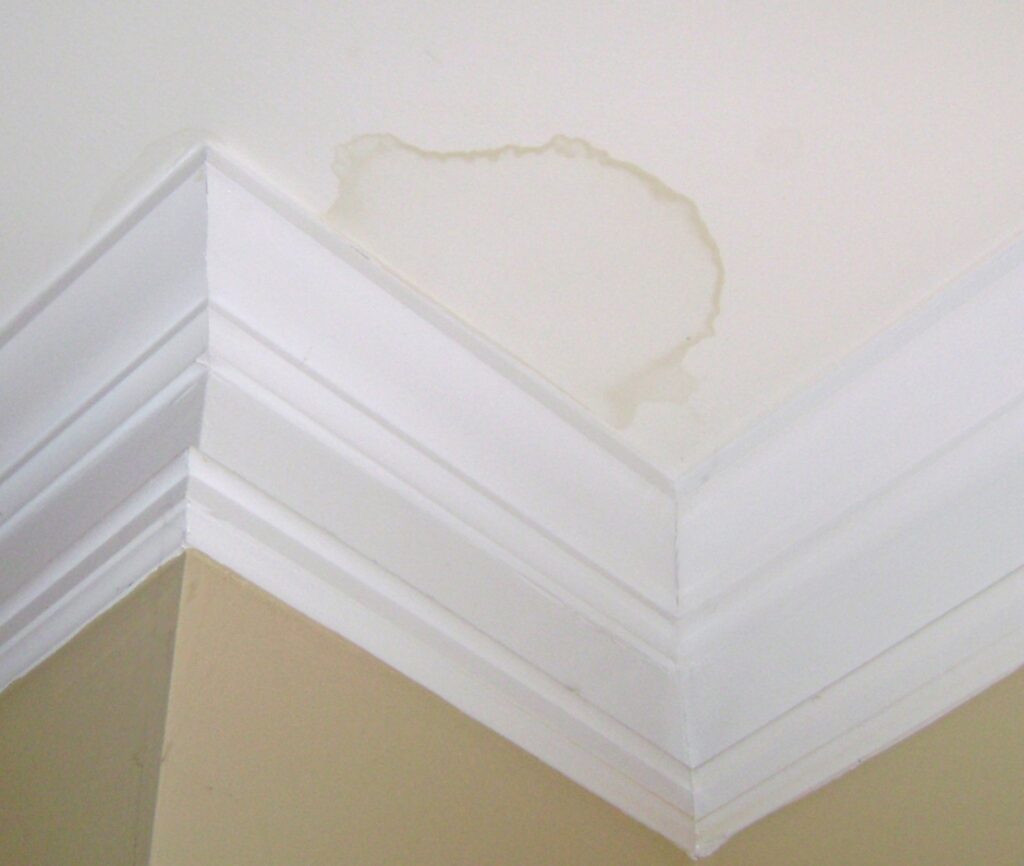
Find the Roof Vent Pipe Leak
The attic is above the room where the water stain on the drywall ceiling. To locate the source of the leak, I went into the attic with a flashlight. The stain is the corner next to the exterior wall so I focused my search in that direction. The PVC vent pipe for the basement bathroom plumbing rises through the roof directly above the stain on the ceiling. The vent pipe became an immediate suspect.
Take care to walk only on the wood joists when working in the attic. The ceiling drywall will not support your weight and you can fall through.
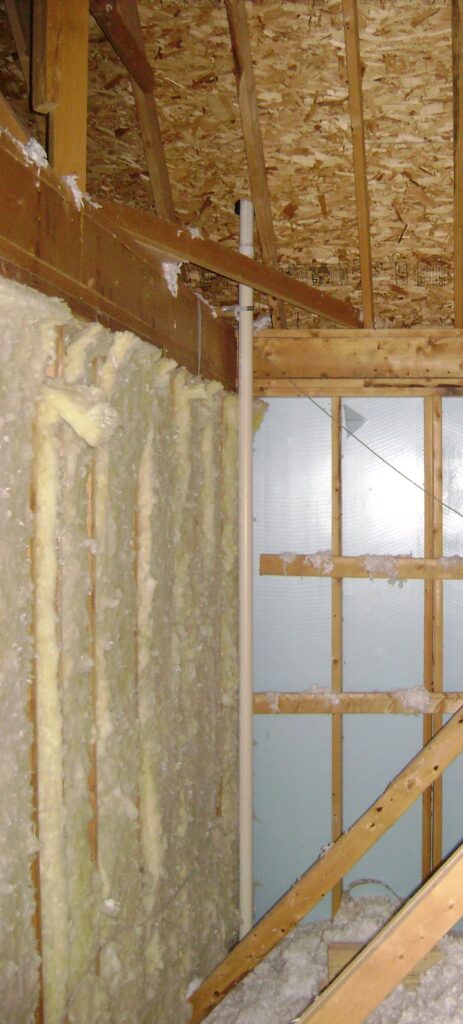
This is the lower end of the vent pipe directly above the drywall ceiling. It’s covered by blown fiberglass insulation. The dark bits on the insulation are nut shells left by flying squirrels used to get into the attic during the winter before I had the roof replaced.
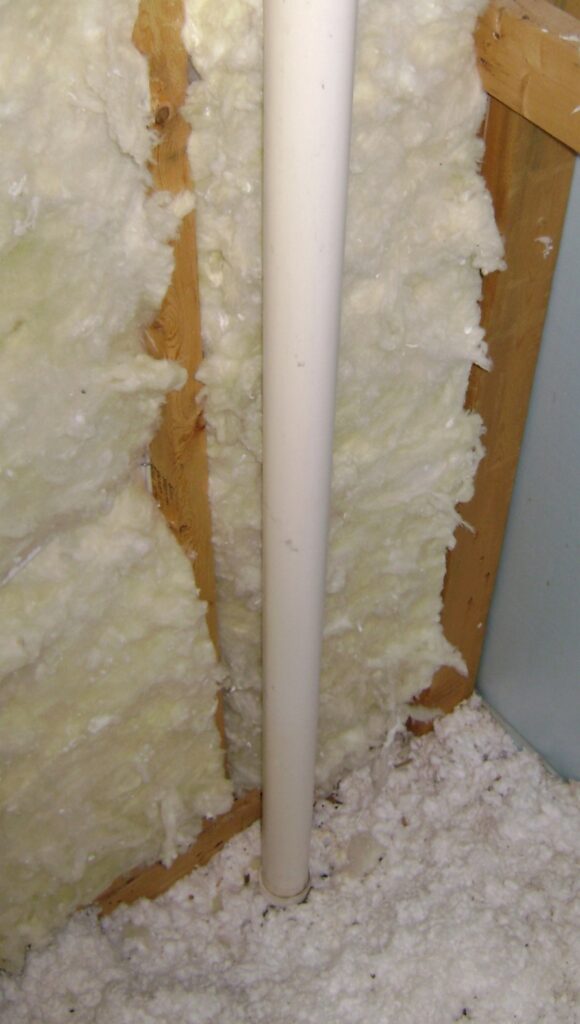
I moved the insulation away to reveal the bottom of the vent pipe and ceiling drywall. The insulation and paper surface of the ceiling drywall are damp. I’m getting close to finding the leak:
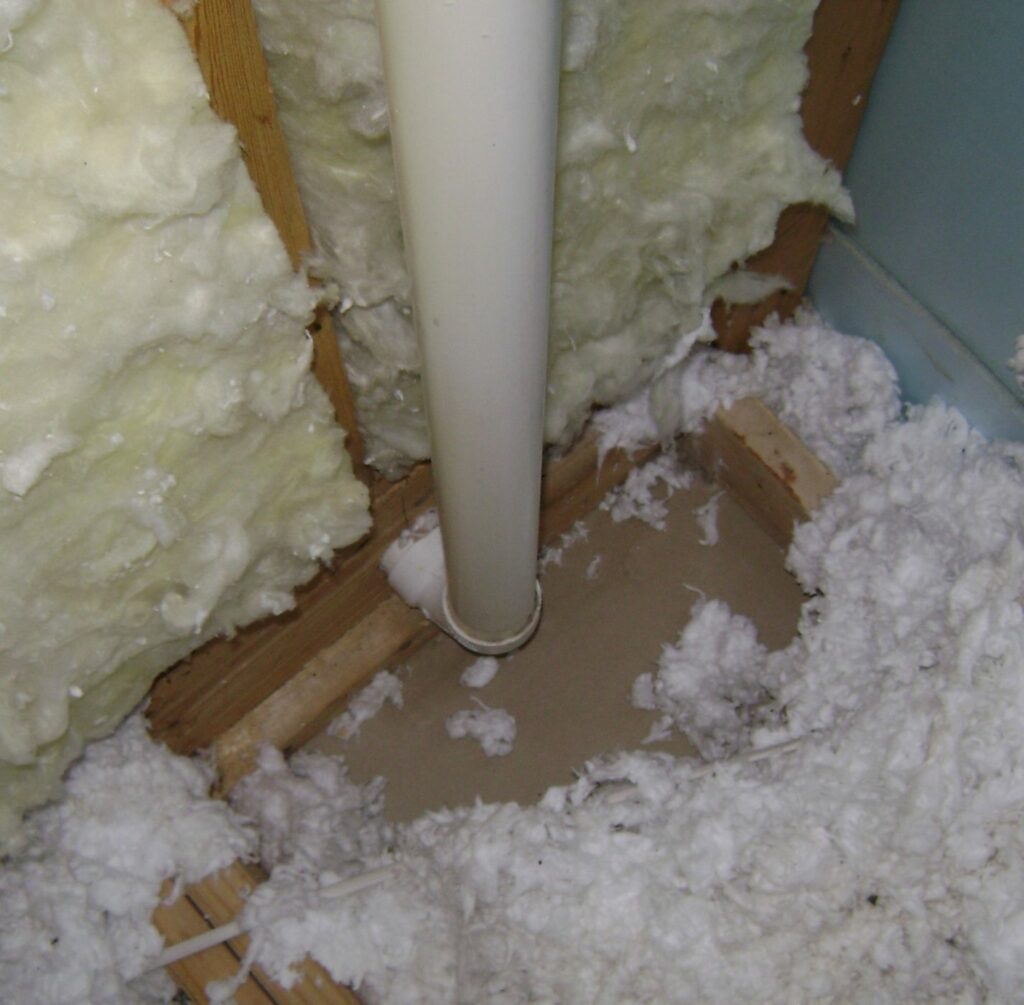
A closer inspection of PVC vent pipe penetration through the roof revealed daylight shining around the vent boot flashing. This is the source of the water leak! Rain water leaks through the cracked the rubber vent boot, runs down the vent pipe and drips onto the drywall ceiling. Persistent heavy rains caused enough water for the leak to soak through the drywall ceiling and be noticed inside the house.
On the positive side, the Oriented Strand Board (OSB) roof deck is dry and untouched by the leak. If the roof decking were rotted, the shingles would have to torn up and the rotted section of deck replaced – a major repair effort!
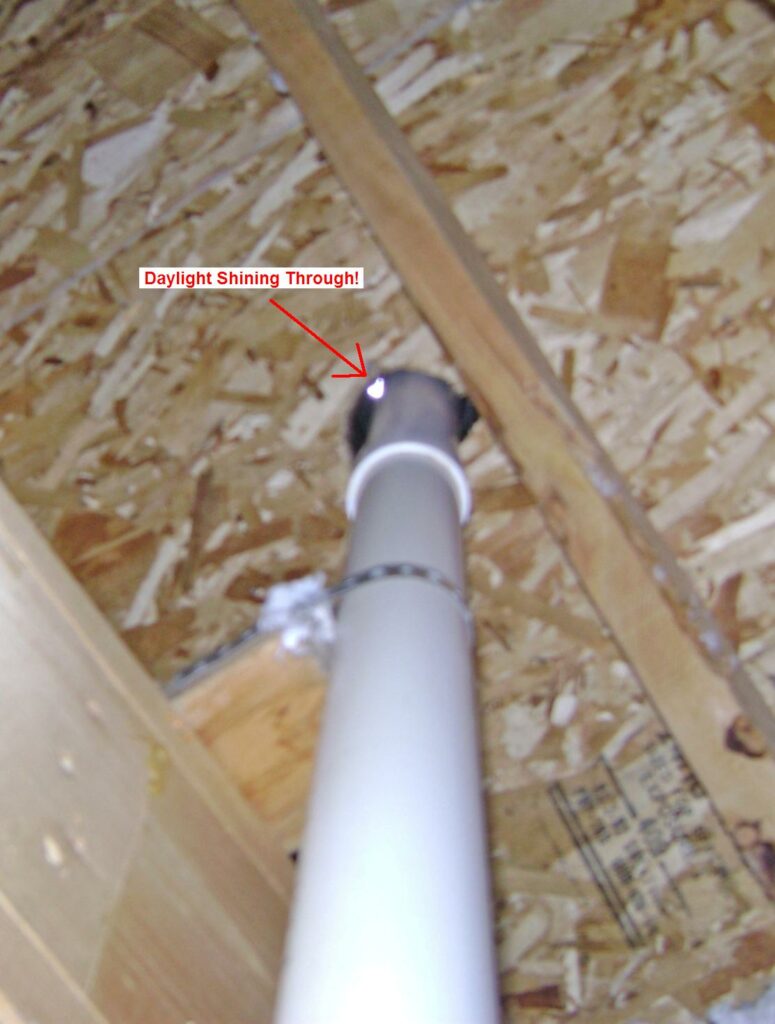
More rain was in the forecast and it might a take a couple of days to get a roofer over to repair the vent flashing. To minimize further water damage I tied a towel around the pipe to temporarily catch the rain water. This is only a band-aide solution:
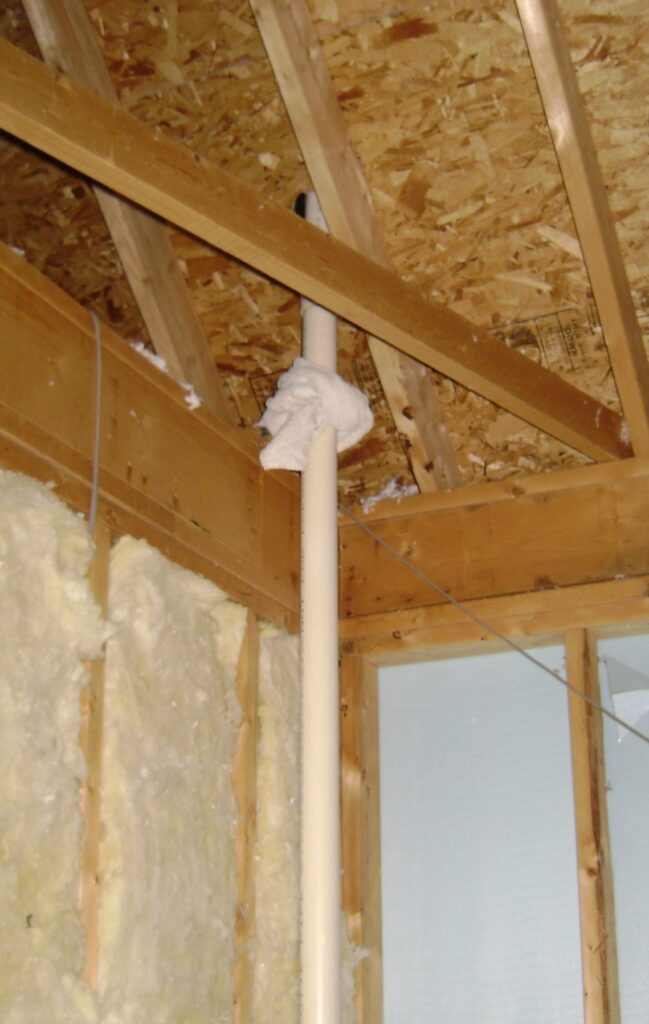
An alternative is to place a pan on the drywall ceiling under the PVC vent pipe elbow to catch the leak.
Roof Leak: Cracked Rubber Vent Pipe Boot
The rubber vent pipe boot (or flashing) has cracked and split as highlighted in the next photo (red square). The rubber vent boot flashing must be seal tightly around the PVC vent pipe to make a watertight seal. The roof is about 10 years old and the vent boot has cracked from a combination of the UV rays from the sun, weathering, expansion and contraction from the heat and cold:
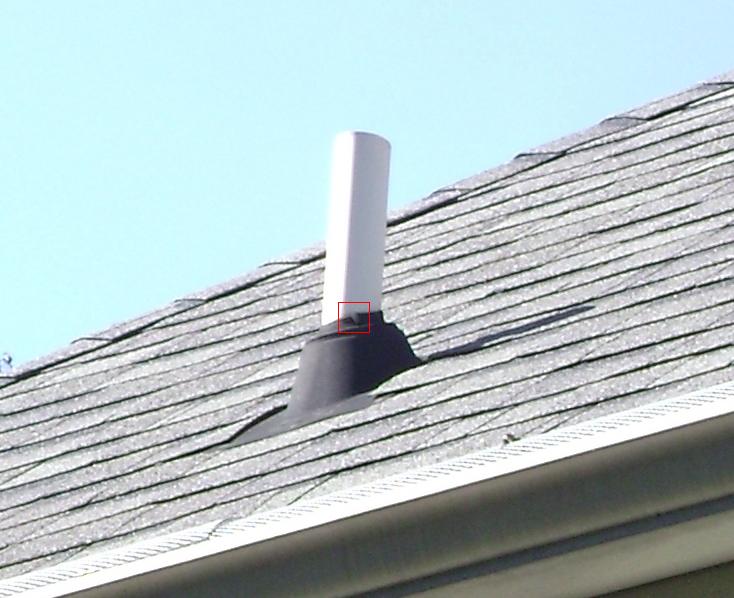
The 2″ PVC vent pipe with the cracked rubber boot is shown in perspective to the house. The roof is a steep 10/12 pitch and the house sits on a hillside. A 40 foot ladder is needed to reach vent pipe from the ground. Time to call a professional roofer to make this repair.
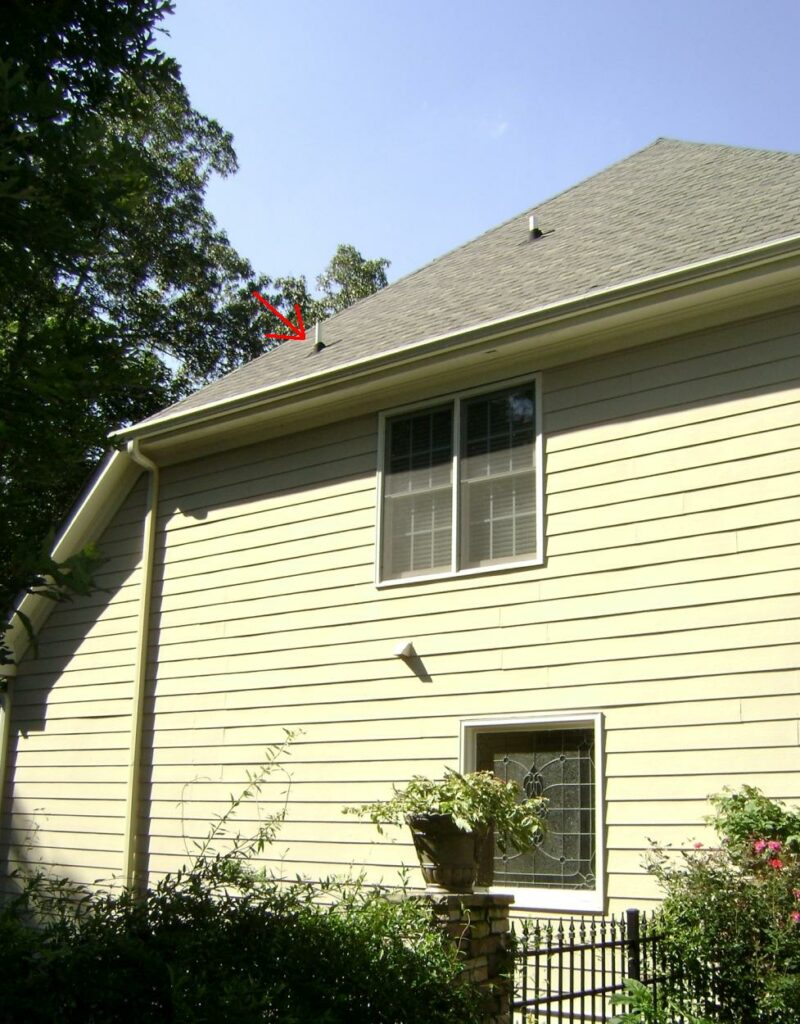
This repair is continued in How to Repair a Leaky Roof Vent Pipe Flashing – Part 2.
Hope this helps,
Bob Jackson